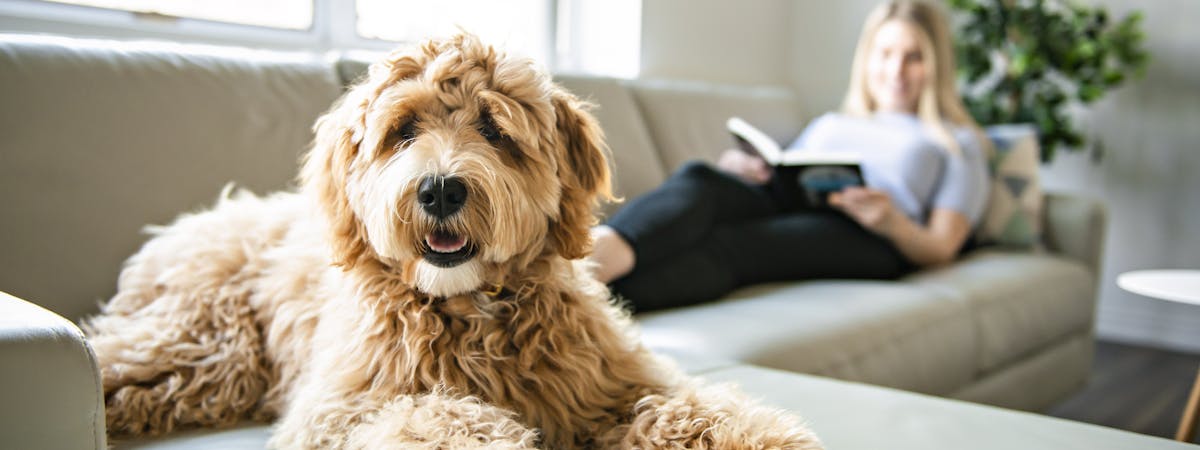Congratulations on your new puppy! Those first weeks with your new pup are lots of fun, as you get to know each other, and the little dog’s personality starts to develop. But, settling and housetraining a new pet can be hard work, especially when it comes to puppy toilet training and puppy training for beginners!
For the pet parent, it’s a delicate balancing act of firmly reinforcing good habits while continuing to develop that new bond of love and trust. It can feel frustrating at times, but it’s also really rewarding (look out for those proud little wags and scampers!).
All dogs are different, and when it comes to getting puppy toilet training right, it’s a marathon, not a sprint. The key to successful house training takes patience and consistency (and a lot of wiping), but every pup gets there in the end. To help you and your pup on this journey, we’ve put together some helpful puppy toilet training tips.
Trending posts
Purr-use some of the top blogs our members have been loving this month- Top male dog names for your new furry friendGot a new furry family member in your pack? Check…

- Top female dog names for your new fluffy palWelcoming a new pooch into your family? Explore…

- 250+ gray cat names your silver feline will loveRecently welcomed a fluffy gray bundle of joy into…

- What are normal pet sitting rates?Discover the average pet sitting rates for animals…

- Unique dog names to stand out from the packDare to be different with our list of the best…

Steps to toilet train a puppy
Before you start toilet training your puppy, have a clear training plan in place. You can start toilet training at between 12 and 16 weeks. Before this, they don’t really have enough control over their little bladders and bowels to be able to “hold it in”.
A good puppy toilet training plan has these key steps:
1. Choose the right spot. Where do you want your puppy to wee? The surface they use is very important to most dogs, and, if you adopted your pooch, the kennel should be able to advise on an older pup’s preferences. The scent of wee will start to build up associations, so using the same part of the garden can be helpful (and that’s why we need to thoroughly clean after an accident in the wrong place - here's what neutralizes dog urine).
2. Prepare your home. You may want to cover or remove your rugs, or even temporarily shut off the room with the cream, deep-pile carpet. Make sure you have all the toileting equipment to hand, and that access to your chosen outside door is always clear (in case of emergency dashes). If you want to know more about puppy equipment, check out our helpful article.
3. Make sure there’s a routine. A clear toileting schedule is reassuring for a puppy and helps to prevent any anxious accidents. The more secure and happy your pup feels, the more successful the training will be. So, what routine suits you both? Good times to “go outside” (we love all these euphemisms!) can be:
- First thing in the morning, after they wake up
- After food and drink
- After any naps
- After a playtime
- Just before bed (as late as you can, if you want a peaceful night!)
- And in the case of smaller pups, in between all these times, too. We know this sounds like an awful lot of trips to the garden or other toilet area, but it really will be worth the patience in the end
4. Teaching associations. Your puppy may not initially realise that they’re outside to wee or poo. In fact, at first, they’re more likely to scamper around with excitement, exploring this massive and fun new world. Just sit calmly if this happens, and actually, if you ignore them, they’re more likely to “go”. When they do wee or poo, lots of praise and they’ll gradually learn that these outside trips mean business.
5. Using cues. If your pup’s good with language, start to use words like “wee wee” when they perform in the right place, to increase this association. Use praise when they get it right and maybe give them a reward, such as a play with their favourite toy. Don’t be tempted to use a food treat. (Imagine the thought process: “Hmmm, when I wee I got a snack. Better wee more…”).
How long does it take to toilet train a puppy?
New dog owners often ask, “How long does it take to toilet train a puppy?”, often when they’re on their hands and knees, scrubbing up that morning’s third puddle. The unhelpful answer is, as long as it takes. It’s the same as everything: we’re all different, and as we said at the start of this article, it’s about getting it right, not about speed.
Typically, it takes a dog between four and six months to go from uncontrolled puppy weeing to being housetrained. Some experts say that many dogs aren’t fully trained until they’re at least a year old.
So, if you see any articles called something like “How to toilet train a puppy in 7 days”, just be aware that while all tips are helpful, successful training within a week is extremely rare.
Toilet training speed varies between breeds, too. Some types of dog are simply easier to train than others. Plus, think about bladder size: a Great Dane can hold a lot more than a Daschund. A tiny pup may need more trips outside during training.
How to know when your puppy needs to go to the toilet
As well as the regular trips to the toileting area, you’ll need to learn the signs that your puppy needs to go. These can be:
- Looking around anxiously
- Sniffing in corners and behind furniture (they’re looking for a suitable spot)
- Spinning in circles
- Fidgeting or moving between activities
- Whining
- Pacing around
Look out for these signs, then encourage your puppy to their proper toileting place. Don’t carry them, as they’ll develop more confidence in their own bladder/bowel control if they can walk there themselves.
How to deal with accidents during puppy toilet training
Accidents are inevitable when your pup’s learning to toilet. The old method of “rubbing their nose in it” is completely unacceptable, as is shouting at the puppy. Stay calm and stick with your routine. Accidents aren’t major setbacks, they’re simply, well, accidents.
If you catch your puppy in the act of toileting in the wrong place, clap to get their attention, then take them outside to their usual spot. Hopefully they will finish their pee or poo in the right place, and you can reward them with cuddles and praise. Yes, you might get wee on you. Be prepared to launder plenty of clothes during this stage.
It’s a bit different if you spot the wee at the puddle rather than at the performance stage. Clean up thoroughly, using a product that doesn’t contain ammonia (this smells a bit like wee to a dog). Don’t make a fuss or tell the dog off. Simply clean it, and move on.
Hopefully, you’ll experience fewer and fewer accidents as the training continues. If you have any concerns about this, speak with your vet.
What NOT to do while puppy toilet training
When we’re thinking about how to toilet train a puppy, what not to do can be as important as what to do. Here’s a rundown on things to avoid:
- Never shout or punish your puppy. As we mentioned earlier, this doesn’t help and will just stress out your puppy
- Don’t rub their noses in it. This really, really doesn’t work
- Don’t use ammonia-based cleaners, as they smell of urine and will encourage the dog to wee in that place again
- Never rush them during their outside trips
- Don’t change your routine. This will confuse the pup
Keep being gentle and patient with your puppy and they’ll learn much faster. Dogs respond to kindness and calm tones, and even if you don’t feel especially calm while mopping up wee, an outwardly relaxed demeanour will really help. If you feel you need some pro support while training your puppy, here’s how you find a local trainer.
Soon, those little puddles and dashes to the door will be a thing of the past. Dogs are wonderfully intelligent pets who love to learn and please, which is really reassuring to know when you embark on your puppy toilet training journey together!
Pet sitting for puppies
If you need to go away when your dog’s still young, don’t worry. Our fabulous pet sitters will give your pup all the love and care they need while you’re away and will support any training routine that you have in place.
Looking for a house and pet sitter? Meet our community of trusted house and pet sitters, just waiting to connect with you and your pup.

